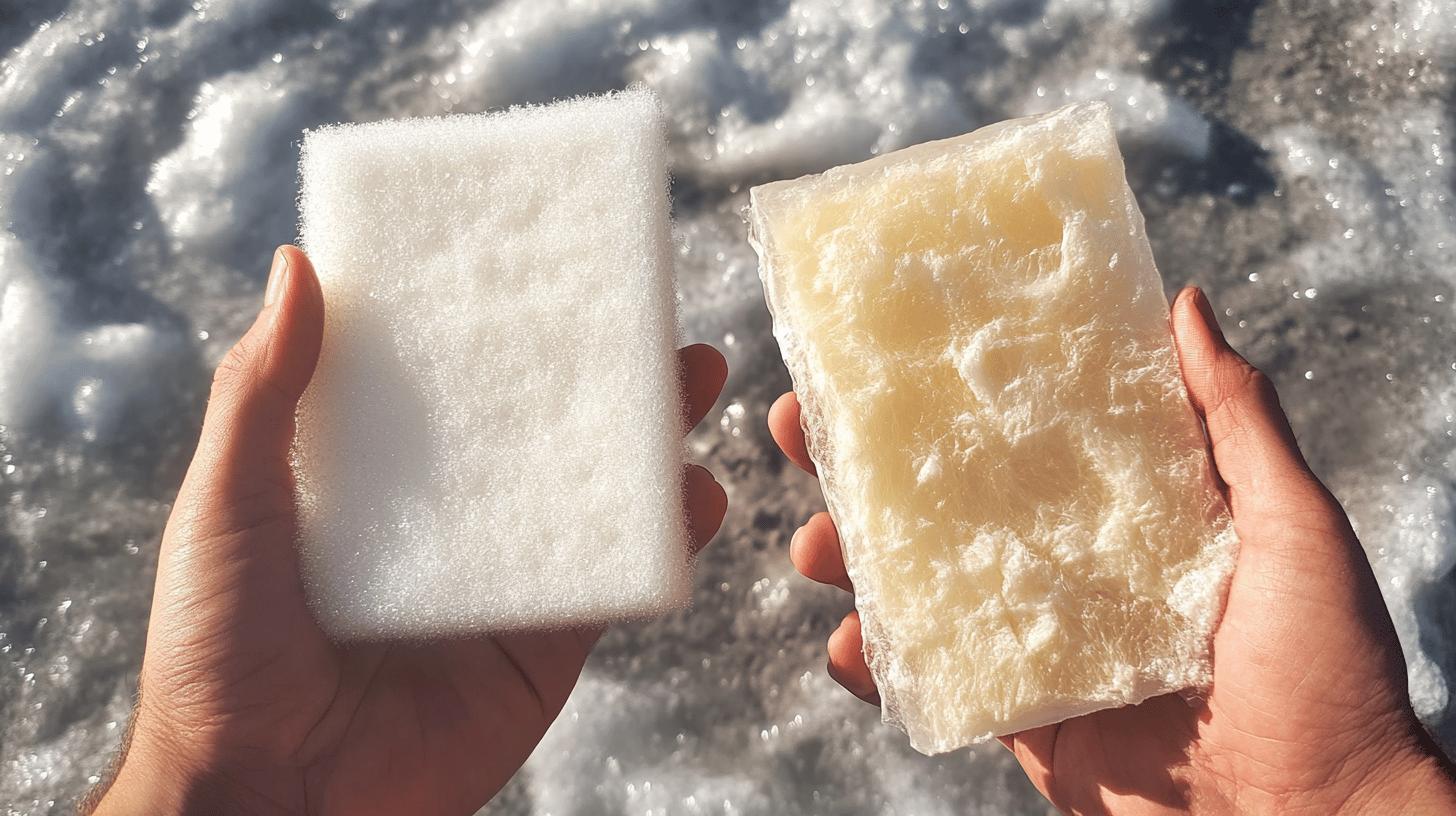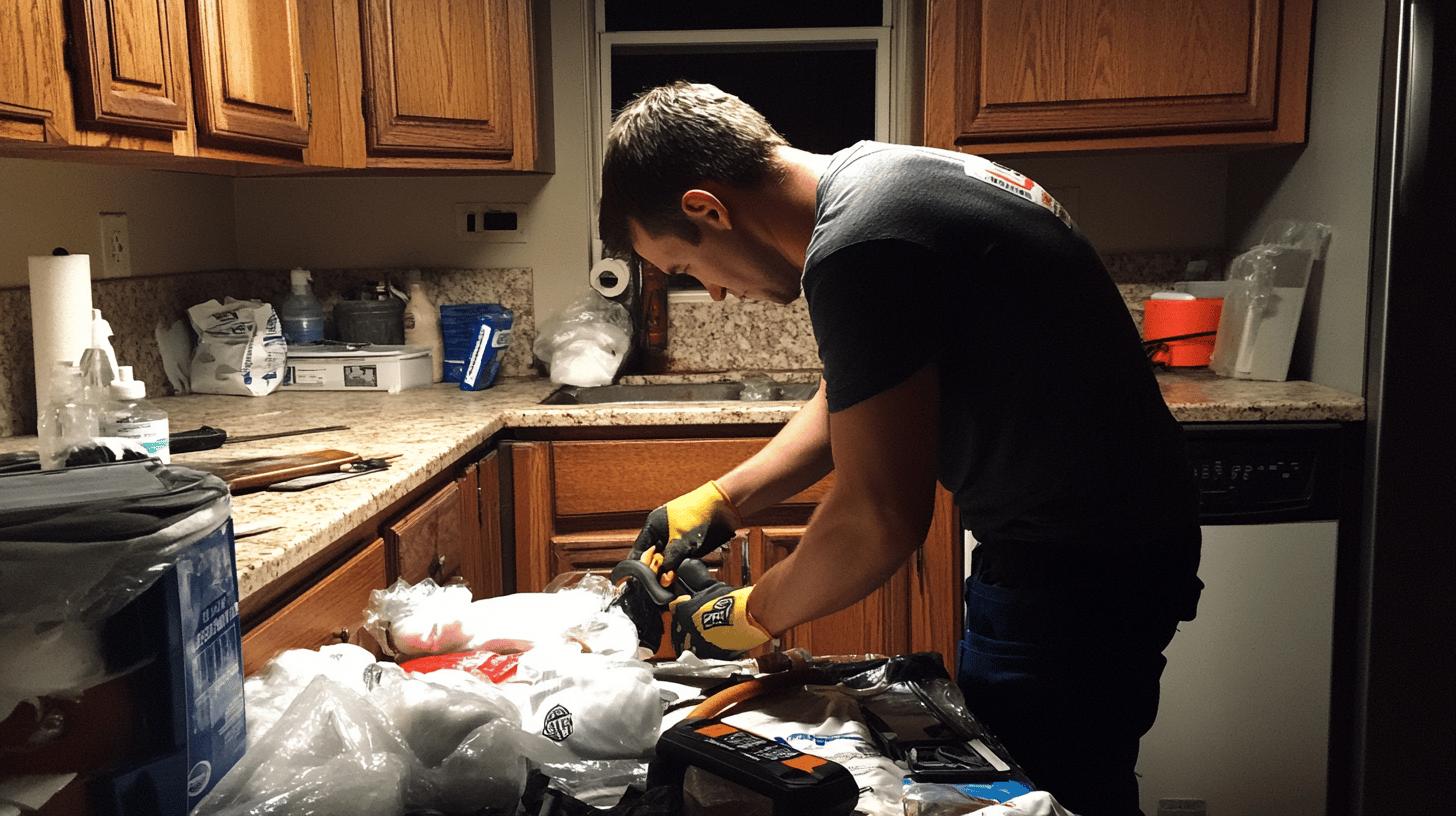TL;DR:
- Importance: Insulating outdoor pipes prevents freezing and costly damage.
- Insulation Types:
- Foam Pipe Sleeves: Easy to install, cost-effective.
- Pipe-wrap Insulation: Versatile for shorter pipes (foam-and-foil, bubble-film).
- Rubber Insulation: Moisture and UV resistant.
- Fiberglass Insulation: Excellent thermal resistance.
- Spray Foam Insulation: Great for hard-to-reach areas.
- Installation: Measure accurately, use self-sealing options, secure tightly.
- Professional Help: Recommended for precision and effectiveness, especially with fiberglass.
- Considerations: Climate severity, pipe accessibility, and insulation durability are crucial in selection.
Are your outdoor pipes ready for the cold winter? If you’re hoping they’ll be fine without insulation, you might be taking a big risk. Insulating your pipes is key to stopping them from freezing, bursting, and causing expensive water damage. But what’s the best way to protect them? In this guide, we’ll check out different insulation options like foam sleeves, pipe-wrap, and rubber insulation to keep your pipes safe and your home energy-efficient. Let’s dive into the best ways to protect your pipes from winter!
Effective Outdoor Pipe Insulation Options
Insulating outdoor pipes is super important to stop them from freezing, bursting, and causing water damage. Without the right insulation, your pipes are at risk when the temperature drops, leading to costly repairs. Foam pipe sleeves, pipe-wrap insulation, and rubber insulation are great options, each with its own perks. Picking the right one helps keep your plumbing safe and running smoothly.
- Foam Pipe Sleeves: Easy installation, snug fit
- Pipe-wrap Insulation: Available in foam-and-foil, bubble-film
- Rubber Insulation: Moisture and UV resistant
- Fiberglass Insulation: High thermal resistance
- Spray Foam Insulation: Ideal for hard-to-reach areas
Each insulation type has its own strengths. Foam pipe sleeves are affordable and easy to install, making them a quick fix. Pipe-wrap insulation, like foam-and-foil or bubble-film, works well for shorter pipes. Rubber insulation is perfect for outdoor pipes since it resists moisture and UV rays. Fiberglass provides top-notch thermal resistance, ideal for really cold areas. For tricky spots, spray foam is great at covering hard-to-reach areas and boosting energy efficiency.
Comparing Foam and Fiberglass Insulation

Foam insulation is a great choice for outdoor pipes because it’s flexible, durable, and resists moisture. It fits securely around pipes of different shapes and sizes, protecting them from harsh weather and preventing rust. Plus, it’s easy to install with pre-slit sleeves, making it a good option for DIY projects.
Fiberglass insulation offers top thermal resistance, keeping pipes warm in freezing temperatures and preventing costly damage. However, it can irritate your skin during installation, so you need to wear protective gear. For best results, professional installation is usually recommended.
|Insulation Type | Advantages | Drawbacks |
|—————-|———————————————-|————————————————————-|
| Foam | Flexible, durable, moisture-resistant | Less effective in extreme cold compared to fiberglass |
| Fiberglass | Excellent thermal resistance | Skin irritation risk, requires careful installation |
Deciding between foam and fiberglass insulation depends on your climate and needs. Foam insulation is great for moderate climates, as it’s easy to install and protects against moisture. Fiberglass works better in really cold areas, where keeping pipes warm is crucial. For the best outcome, it’s a good idea to ask a professional plumber to help you choose and install the right option.
Installation Tips for DIY Outdoor Pipe Insulation
Insulating outdoor pipes can be easy if you choose the right materials. Self-sealing foam and insulation wraps are great options because they’re simple to use. Just measure your pipes, cut the insulation to size, and wrap it tightly around the pipes. A snug fit helps keep the cold out and improves energy efficiency, protecting your pipes from freezing.
- Select appropriate insulation material
- Accurately measure and cut insulation
- Secure insulation tightly around pipes
- Use self-sealing foam for ease
Professional Installation and Its Benefits

What makes pipe insulation tricky? Getting a tight fit around oddly shaped pipes can be tough, and mistakes during installation, like leaving gaps, reduce its effectiveness. Materials like fiberglass also need careful handling to avoid irritation and ensure full coverage. If not done right, pipes could still be at risk of freezing or losing heat.
Why hire pros for insulation? Experts know how to install insulation properly, making sure it fits your home’s needs and the local climate. They ensure the system is well-protected, improving efficiency and preventing issues like freezing. Hiring professionals, like those from Lex Air Conditioning and Heating, guarantees the job is done right, giving you peace of mind.
Factors to Consider When Choosing Pipe Insulation
How does climate affect your insulation choice? The local weather plays a big role in deciding which insulation works best for outdoor pipes. In extremely cold areas, you’ll need something with strong thermal resistance, like heat tape, which actively keeps pipes warm. In milder climates, foam insulation usually does the job without needing extra heating. Knowing your local climate helps ensure your pipes stay protected year-round.
Why are accessibility and cost important? How easy your pipes are to reach can impact which insulation you choose. For accessible pipes, you have more options, like using rigid materials such as fiberglass. For harder-to-reach pipes, flexible options like foam sleeves or spray foam work best. Cost also matters—foam is affordable, but pricier materials like rubber or fiberglass offer more protection and efficiency in the long run.
- Climate conditions
- Pipe accessibility
- Insulation material durability
Why is durability important for outdoor pipe insulation? Durability impacts how well the insulation holds up against harsh conditions like UV rays, moisture, and temperature changes. Outdoor pipes are exposed to these elements, and materials like rubber insulation are great at resisting moisture and UV damage, making them ideal for long-term protection. Strong, durable insulation means you won’t have to replace it as often, saving you time and money while keeping your pipes safe.
Final Words
Choosing the best insulation for outdoor pipes is key to preventing freezing and costly damage. Materials like foam, rubber, and fiberglass each have benefits—foam is flexible and durable, while fiberglass has strong thermal resistance but needs careful handling. DIY enthusiasts can get good results with the right material and techniques, but professional plumbers offer expertise to handle any challenges. Considering climate and durability helps you make smart decisions, ensuring long-lasting and efficient pipe protection.
FAQ
What is the best insulation for outdoor pipes?
The best insulation for exterior pipes includes foam pipe sleeves, pipe-wrap insulation, rubber insulation, fiberglass, and spray foam. Each type serves specific needs like freeze protection and energy efficiency.
How can I prevent pipes from freezing?
Prevent freezing by insulating pipes with materials like foam pipe sleeves or rubber insulation. These provide adequate protection against cold temperatures, reducing the risk of pipes freezing and bursting.
What should I use to wrap my outside pipes?
Using foam pipe sleeves or pipe-wrap insulation is effective for wrapping outside pipes. These options are easy to install and help prevent both freezing and condensation.
How do you insulate exposed pipes outside?
To insulate exposed pipes outside, measure the pipes, choose the appropriate insulation (foam sleeves, rubber, or fiberglass), cut it to fit, and securely wrap it around the pipes for optimal protection.
Is fiberglass pipe insulation a good option?
Fiberglass pipe insulation offers high thermal resistance, making it suitable for reducing heat loss. However, it requires careful handling due to skin irritation risks and proper installation for effectiveness.
What are the benefits of rubber pipe insulation?
Rubber pipe insulation is moisture and UV-resistant, providing robust durability for outdoor use. It is suitable for fluctuating temperatures, offering effective freeze protection and maintaining pipe integrity.

